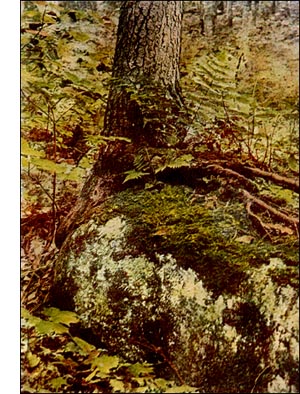Marchantia Polymorpha Liverwort
 Marchantia polymorpha, (L.)
Marchantia polymorpha, (L.)Habit and habitat.-Along wet banks, in bogs, beside streams, about green-houses, and on damp ashes on the shady side of houses.
Name.-The generic name Marchantia was given by the son in honour of his father, Nicholas Marchant, a French botanist who died in 1678. The specific name polymorpha is compounded of the Greek; many and form.
Plant (gametophyte).-Peculiar dull-green, with broad ribbonshaped thallus generally once or twice forked. Costa or midvein broad. Upper surface divided off into rhomboidal spaces (areolae). One stoma or pore in the centre of each rhomboidal space. Gemmae cups, saucer-shaped with toothed margins, are often present.
Habit of flowering.-Antheridia or male organs are imbedded in the upper surface of a shield-shaped, radially lobed disk supported by a peduncle and bearing scales on the under surface. This male receptacle (androecium) grows from the upper surface of the thallus. Archegonia or female organs are borne on the under side of a radially lobed disk supported upon a peduncle on the upper surface of the thallus. The lobes are finger-like, 8 to 11, usually curved downward.
Section of male disk.-Shows antheridia concealed in depressions in the surface of the disk.
Male flowers (antheridia).-Oval upon a pedicel (seta). Section shows a wall and numerous cells containing spermatozoids, each with two fine cilia.
Section of female disk.-Shows archegonia on the under side of the disk.